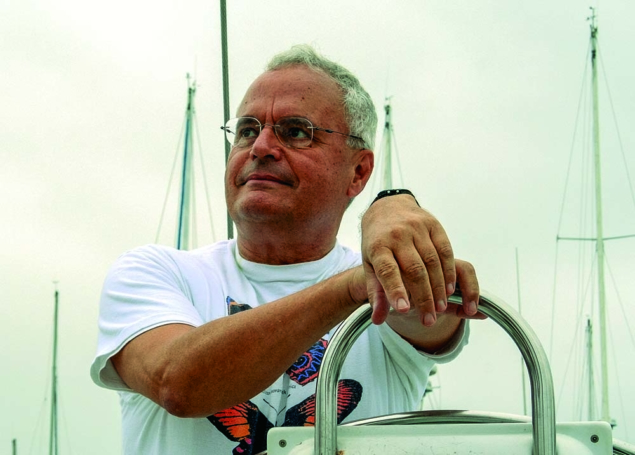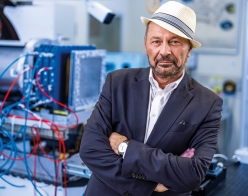
Hans Paar, emeritus professor of physics at the University of California, San Diego (UCSD), passed away on 17 June after a short illness. Paar was initially trained at Delft University of Technology in his native country of the Netherlands. This engineering background served him well throughout his career, allowing him to take on important tasks in the design, construction and testing of equipment in all the particle-physics experiments he participated in.
Paar started his particle-physics career at Columbia University in the US, where he worked with Leon Lederman on one of the first experiments at Fermilab (E70). After completing his PhD thesis on this project, he relocated to Europe to work as a CERN fellow with another Nobel Laureate, Jack Steinberger, on WA1, the first experiment with the high-energy neutrino beam of the newly commissioned Super Proton Synchrotron (SPS).
In 1978, Paar joined a team at NIKHEF, the Dutch National Institute for Subatomic Physics, that worked on the TPC/2γ experiment at the SLAC National Accelerator Laboratory in the US, and he quickly became one of the leaders of the collaboration that carried out this experiment. His visibility at SLAC led to an offer from the UCSD, which he then joined as a faculty member in 1986 and where he remained for the rest of his career.
Paar was an internationally recognised physicist. He studied the properties of the bottom quark at electron–positron colliders since the early 1990s, first as a member of the CLEO collaboration (Cornell) and later the BaBar collaboration (SLAC). He also made essential contributions to the design and construction of novel types of calorimeters, in the context of the SPACAL and DREAM projects at CERN.
Later in Paar’s career, his research interests included observational cosmology. Paar and his colleagues set out to detect the B-mode polarisation of the cosmic microwave background radiation to address one of the most fundamental problems in astrophysics – the inflation of the early universe. Paar made crucial contributions to the realisation of this project, named POLARBEAR, which is carried out at high altitude in the Atacama Desert in Chile. Not only did he provide expert leadership, design and analysis skills, he also secured a $600,000 private donation, which helped enable the fabrication of the telescope.
Paar cared deeply about education and creating a nurturing, motivating environment for students. He was instrumental in modernising the UCSD’s curriculum on quantum mechanics at all levels and authored the textbook An Introduction to Advanced Quantum Physics. As part of the UCSD Research Experience for Undergraduates programme, he gave a “Physics of Sailing” course consisting of lectures on the physics of the sport, followed by a full day of sailing on San Diego Bay.
Hans had many interests outside of physics. He was also a devoted husband, (step)father and a very good friend to many. He was a gifted piano player and a serious model-train enthusiast. He helped to create an atmosphere of creative thought and friendliness within every group he was part of. Our thoughts go to his wife Kim, his daughter Suzanne and his stepsons Eric and Alain. We all owe Hans for many happy memories.








